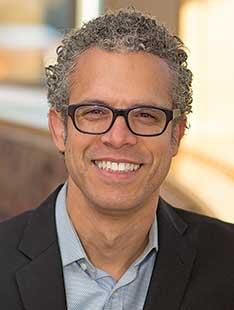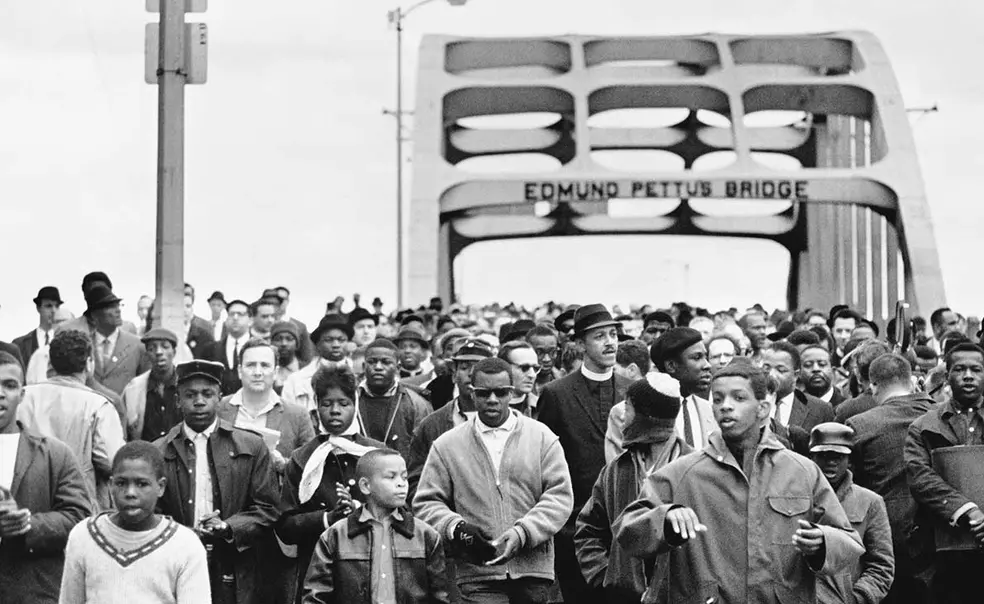Research: How Protest Movements Can Shape an Election
Omar Wasow researched how violent and nonviolent protest influenced the ballot box during the civil rights era

Protests in the United States during the civil rights era, particularly between 1960 and 1972, sometimes led to violence. Politics professor Omar Wasow, the child of two activists, has studied media coverage of this period to see whether those protests and their portrayal had any bearing at the ballot box.
The voting population at that time was 10 percent Black, so Wasow zeroed in on the white vote: “When the [protest] tactics were primarily nonviolent, the counties proximate to nonviolent activism tended to vote more liberally,” he says. But when protesters initiated violence, proximate counties voted more conservatively. Following Martin Luther King Jr.’s assassination in 1968, a week of violent protests dominated nightly news reports. “In the counties with violence, the Democratic vote fell by at least 2 percent, which was enough to help Richard Nixon win the 1968 presidential election,” Wasow says.
As the protest movement in support of Black Lives Matter continues into the 2020 election season, national media outlets have looked to Wasow and his work with increasing frequency. How will the protests — the peaceful ones as well as those marked by violence — influence the result?
According to Wasow, civil rights leaders chose to march on Birmingham and Selma in 1964 because they knew Alabama police would quickly resort to violence. In 1965, on the evening of the now-famous Bloody Sunday, when protesters were beaten on the Edmund Pettus Bridge as they attempted to march from Selma to Montgomery, Americans tuned into ABC were watching a documentary on the Nuremberg trials. The film, which detailed the brutality and inhumanity of the Nazis, was interrupted by reports of the protests, accompanied by footage of police beating the protesters.
“The overlap was so shocking that public opinion for civil rights just spikes,” says Wasow. “I found that ... if peaceful protesters were the object of violence, that tended to generate very sympathetic press. But if both protesters and the state engaged in violence, then the press tended to focus on riots and crime.” Wasow is studying the 2020 protests and whether they will affect the election.
According to Wasow, the media’s taste for the sensational meant that the civil rights protesters of the ’60s had to walk a fine line, dramatizing injustice while telling a story that generated sympathy. But today, when traditional news outlets are but a piece of a wider mosaic comprising the media, activists wield influence through their social-media accounts to great effect, says Wasow.
“We are seeing a significant majority of public opinion is sympathetic to the concerns of protesters, and the media coverage has tended to elevate concerns about rights and justice rather than crime and riots,” he says.
It’s a sensitive question. In May, a data analyst named David Shor tweeted out Wasow’s study amid the violent protests that gripped Minneapolis after George Floyd’s murder. Citing the study and Nixon’s electoral bump, Shor’s implication that the rioting could play into President Donald Trump’s reelection effort sparked a Twitter firestorm, and Shor lost his job. “David Shor was baselessly accused of ‘anti-Blackness,’” says Wasow, who believes Shor presented the paper respectfully but was “fallaciously smeared by critics.”
One thing that has not changed since the ’60s is the ability of images to create lasting changes in public opinion. “A young woman named Darnella Frazier shoots the killing of [George] Floyd, and that video of his callous murder really transforms politics,” says Wasow, who likens the video to the powerful images of Emmett Till’s mutilated body that his mother, Mamie, insisted be published after his lynching. “Darnella Frazier bore witness in an echo of the way Mamie Till bore witness. In order to challenge the status quo, you have to make people sit with something really uncomfortable.”












No responses yet